Shannon V. OKeets
Posts: 22095
Joined: 5/19/2005
From: Honolulu, Hawaii
Status: offline

|
quote:
ORIGINAL: paulderynck
quote:
ORIGINAL: petracelli
quote:
ORIGINAL: paulderynck
quote:
ORIGINAL: petracelli
Ps also think the values should be the same as in Wif
That would have been a problem. An infinite distribution combined with the original set of values would have skewed US Entry from what normally happens. Please take a look at this thread for an explanation of the way the chit values for an infinite distribution were developed. Taking the odds for the chits from the infinite distribution values which were arrived at (and put in MWiF) should also answer the question about the annual averages.
http://www.matrixgames.com/forums/tm.asp?m=2157223&mpage=1&key=Entry�
Thanks for that Paul, and my maths is not what it used to be so forgive me if you answered these questions in your report.
1 have your calculations allowed for the fact that by being aggressive in 1940 the allies will on.y ever be drawing 1940 chits and that the axis run no risk of the 41 chits being added in early. If you have then fair enough and I will have to decide on buying the game or not, if you haven't and USe is remaining as it is brings me to my second question that no one has yet answered.
2 Why has the USE system that works so well in the boardgame been changed. If it is remaining as is dispute my representations tthen will trouble you no longer.
1. Over 25 potential axis strategies were simulated (some VERY agressive, some passive) and each run 100,000 times. This was an iterative process, but finally after blending all those strategies, a distribuion was arrived at that was much closer to the same runs (which did include running out of chits) as those same scenarios using the finite WiF chits.
Besides, the axis would still be stupid to do actions "just because" when they still could be unlucky and put 3s & 4s into US entry. I agree with the previous poster who stated axis strategy does not hinge on US entry chit variance.
Bottom line is the ability to analyze what's in any of the chit pools vs. known chits is vastly reduced, but the overall distribution profiles will remain close to what happens in WiF.
2. Designer's decision, and Steve provided the rationale for it in a previous post in this thread.
I'll just add one thought here.
Yes, the probabilities of drawing low values for the markers in 1940 are better if the Axis takes a lot of aggressive actions in 1940. But obviously that means the Axis will have taken a lot of aggressive actions in 1940 and the US will have accumulated more markers than they would have otherwise. More markers for the US means they can choose more US Entry Options. Or the Allies could also take more aggressive actions in 1940, with a lower risk of losing high valued markers.
Think of the markers as cards. Giving your opponent a lot of cards is usually bad (in most card games), even if they are poor cards you're giving him.
I see the effect of the modified US Entry marker design on Axis strategy to primarily concern making decisions in late 1940 versus early 1941. And that trade-off was always present in the board game version too - every year, starting in 1939.
_____________________________
Steve
Perfection is an elusive goal.
|
 Printable Version
Printable Version





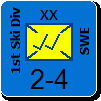

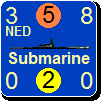
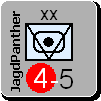
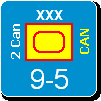
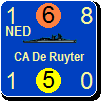
 New Messages
New Messages No New Messages
No New Messages Hot Topic w/ New Messages
Hot Topic w/ New Messages Hot Topic w/o New Messages
Hot Topic w/o New Messages Locked w/ New Messages
Locked w/ New Messages Locked w/o New Messages
Locked w/o New Messages Post New Thread
Post New Thread